There’s a section in the Australian citizenship paperwork about loving a V8.
This review was first published in MOTOR Magazine’s December 2005 issue.
There’s all that muscle, the deep bellowing of full throttle bursts that tells everyone you’re not to be messed with. That beneath all your four-door practicality, there’s someone of menace to be dealt with. What’s not to love?
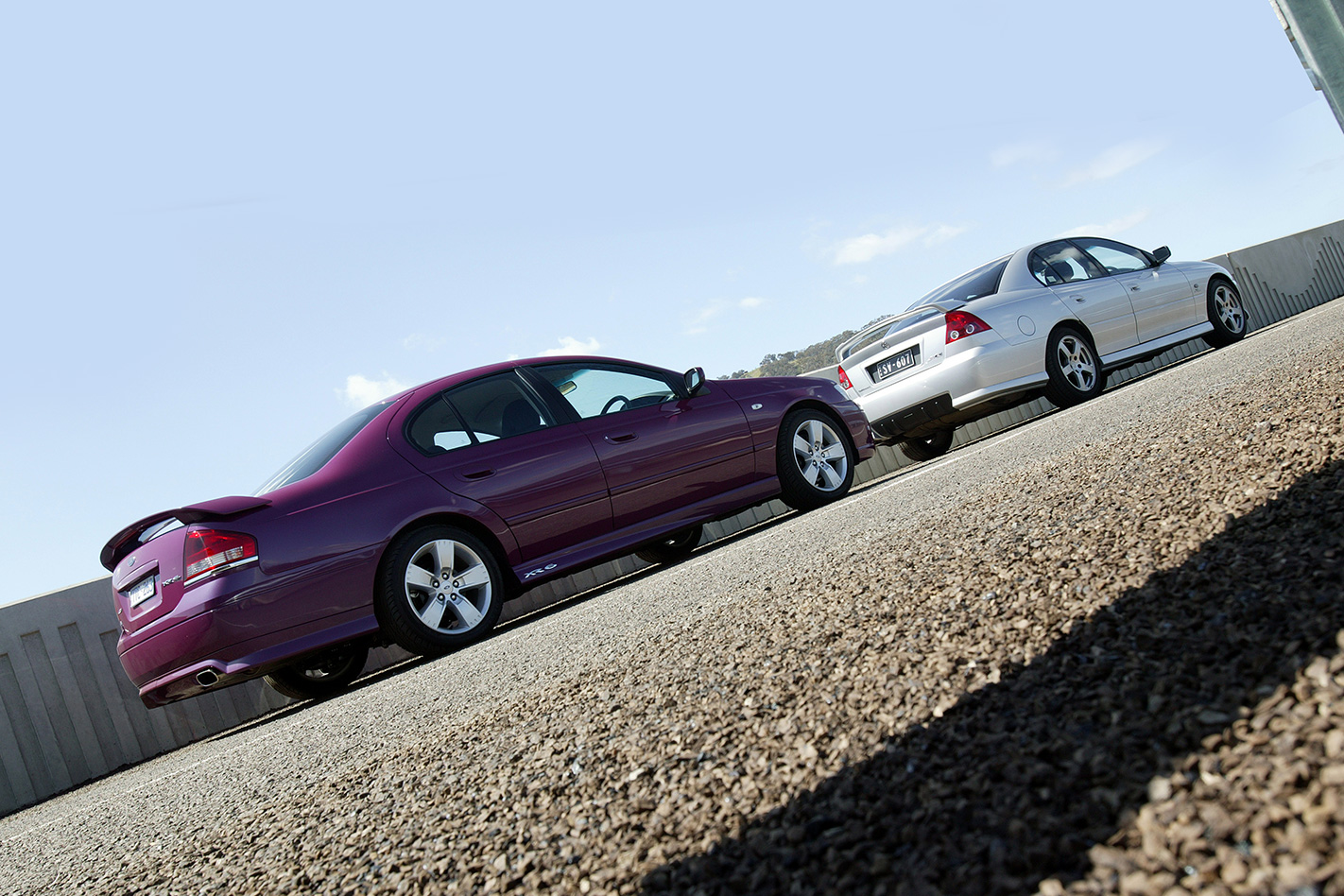
And with both cars offering world-class automatic transmissions, the choice is, on paper at least, tougher than it has ever been. Now re-fettled in its BF regalia, the XR6 armoury has been bolstered by a comprehensive overhaul that included sound and vibration elimination, a bigger electronic brain, cleaner exhaust and better engine hard- and soft-ware.
That, and the (optional) adoption of the six-speed ZF automatic that is nominally the same deal used by BMW and Jaguar, but runs its own casing and gear ratios. Holden, on the other hand, has run with the current VZ SV6 since last year. The 3.6-litre HFV6 was a brand-spanker, and so was its five-speed auto.
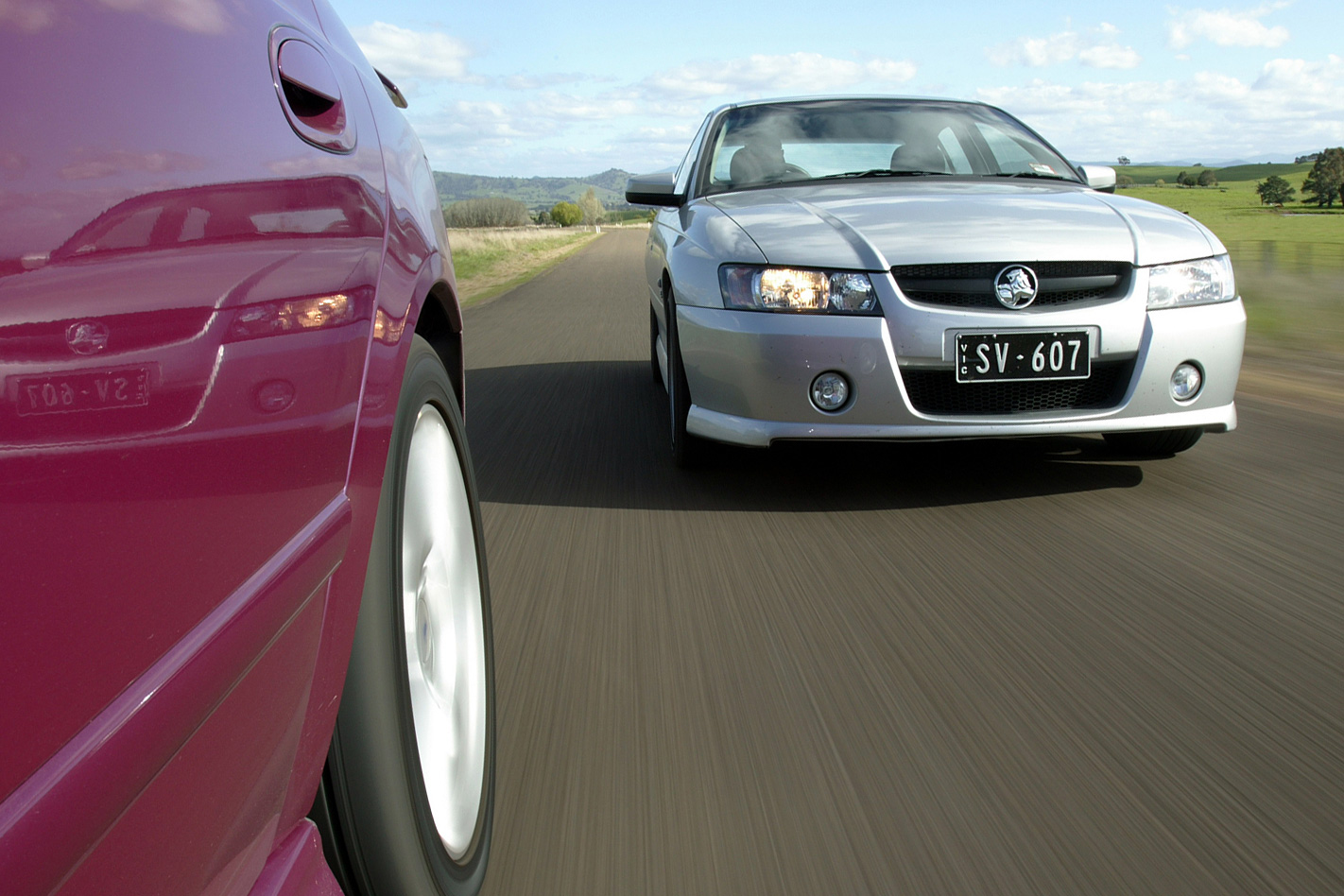
But in this company, it’s the engine’s coarseness that gets your attention. Its noise, vibration and harshness levels are absurdly high. To be brutal, it’s difficult to believe GM brewed up an all-new engine this lacking in refinement. Its defenders will point to the engine specifications, and well they might; it’s got it all on paper.
Ford Falcon XR8 vs Holden VFII SS V Redline
In real life, it’s coarse from idle and it gets worse from there. It just sounds like it’s tearing itself apart. Its shortcomings have been exposed by the trouble Ford’s gone to on its BF upgrade.
It’s done plenty on the engine front – including the adoption of dual, independent cam-timing phasers (the BA used a twin-phase system), moving the oil control valve for the phasers inside the cylinder head, lifting the compression ratio from 9.7:1 to 10.3:1 and bunging in stiffer pistons – and plenty on the exhaust front as well.
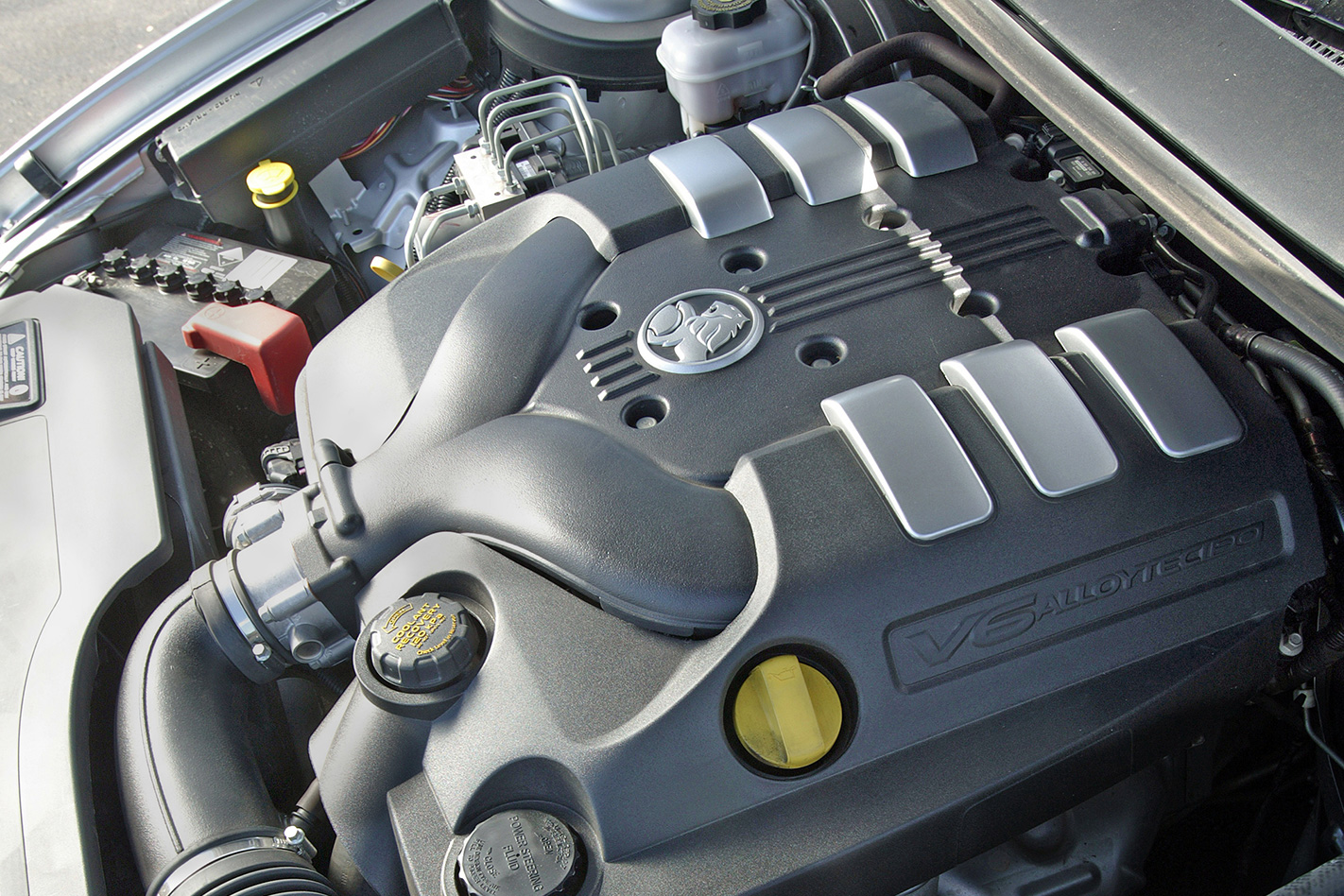
And don’t ask, because not even the Pocket Protectors can tell you why they called it that. That’s all well and good, but the real secret to the XR6’s new found serenity isn’t even engine-related. Ford went through every exhaust pipe, hanger and can, recalculated sound-deadening requirements and plugged up the NVH paths into the cabin.
It’s so bloody quiet, it’s eerie. What noise it is actually left with, as with the XR6 Turbo, is a snarling, menacing howl at high rpm to give it an aural peakiness in defiance of its flat torque curve. There’s torque enough to go around, too, with 383Nm mustered by 2500rpm and 190kW at 5250rpm.
That’s only up 3Nm on the old engine, though this one drops the peak down from 3250rpm and holds its line right through until well after the power curve has taken over. It’s also up in power (from 182kW) and, again, its peak is lower. And the engine note is terrific.
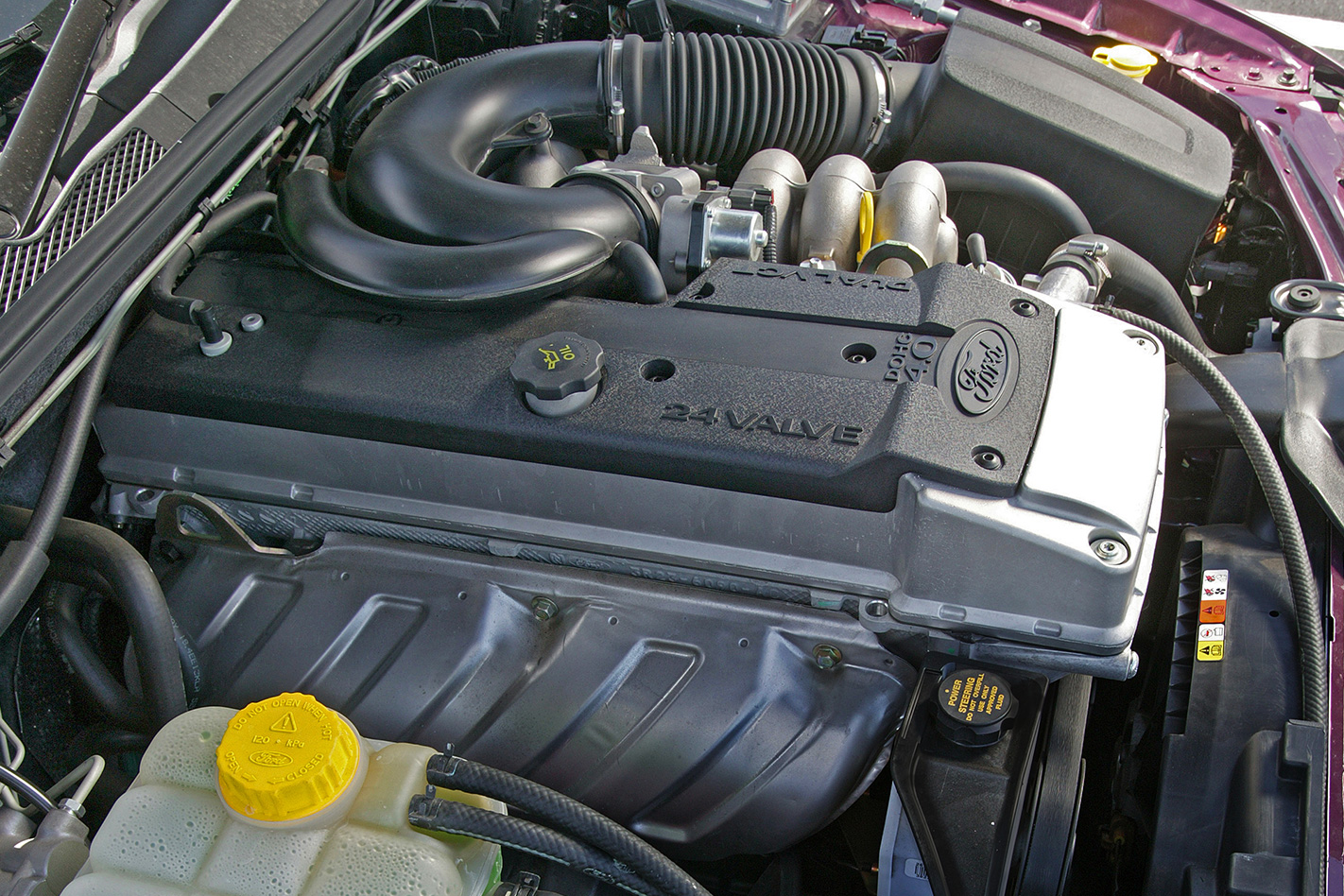
That leaves it a polar opposite to its rival. You only take the SV6 to the redline just to know it can, but then you leave it alone unless you absolutely have to. Just as well, then, that it delivers 90 percent of its 340Nm torque peak between 1570 and 5870rpm, because running it to the 6500 revs for peak power delivery isn’t worth it.
But even with a flattish torque curve, the abundance of surge coming out of the Falcon can leave the Holden struggling to keep pace out of corners or on kickdown. The Ford is helped here by an incredibly classy gearbox and some sublime ratios.
First and second are lower than they were in the four-speed (the stock auto choice, incidentally, and $1250 cheaper), which has it punching in third in the same corners where the SV6 is wheezing and rasping away at the top end of second.
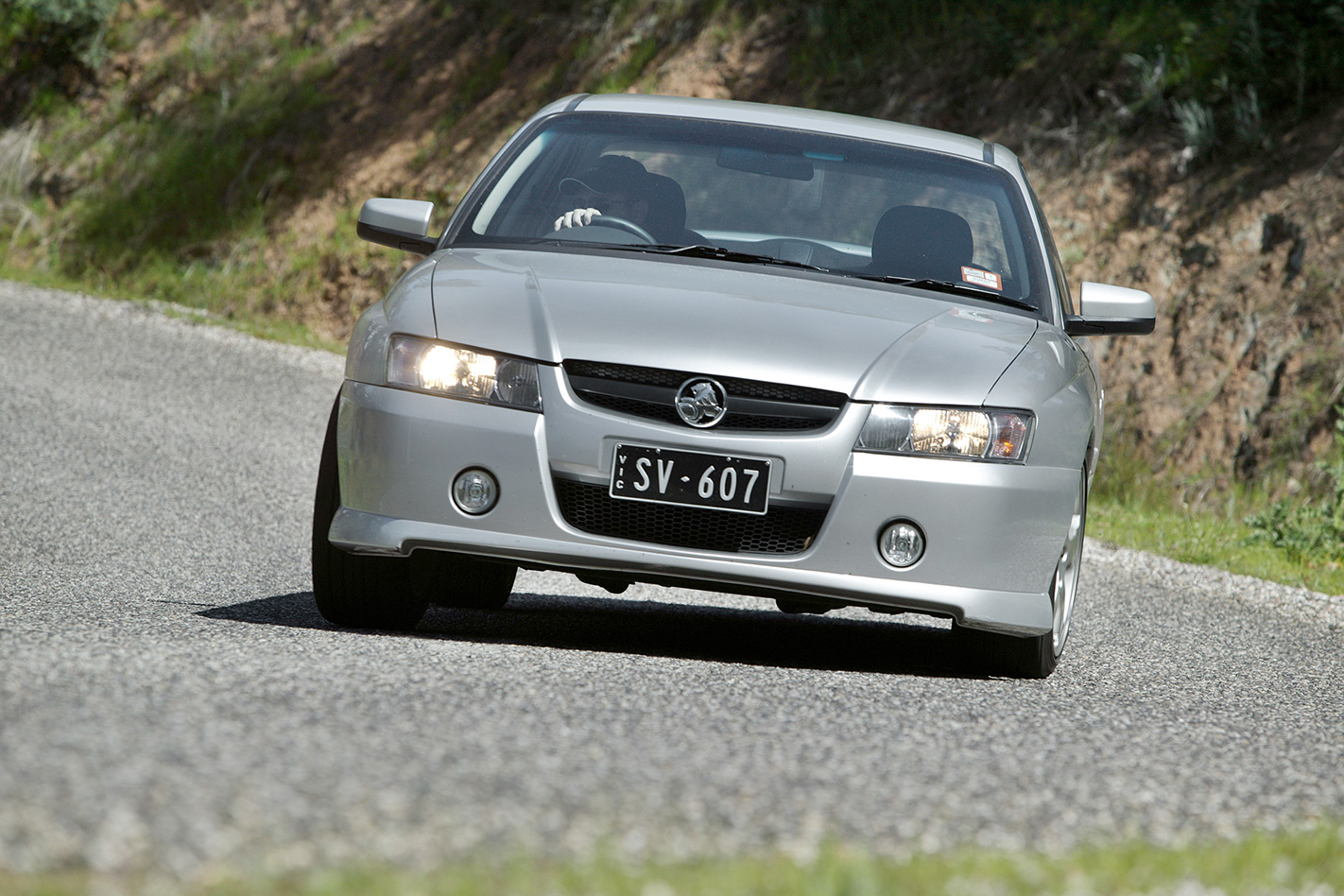
Occasionally it can be a little jerky on its way up the ’box, too. The auto is at its best in the paddle mode (though the positioning of the mode button on the centre console is counterintuitive) and it shifts when its asked to, the way it really should.
Good as it is, though, it can’t match the Ford’s ZF 6HP26 unit. The steps between third and sixth are all quite small, so there’s little-to-no jerkiness on downshifts, plus the torque converter lock-up works in all six forward gears.
The really cool bit, though, is that it gives you credit points for every piece of aggressive driving you do in an effort to map out a shift program. It starts at ‘0’ as a full fuel economy program and can bounce up to 200 for Mad Bastard.
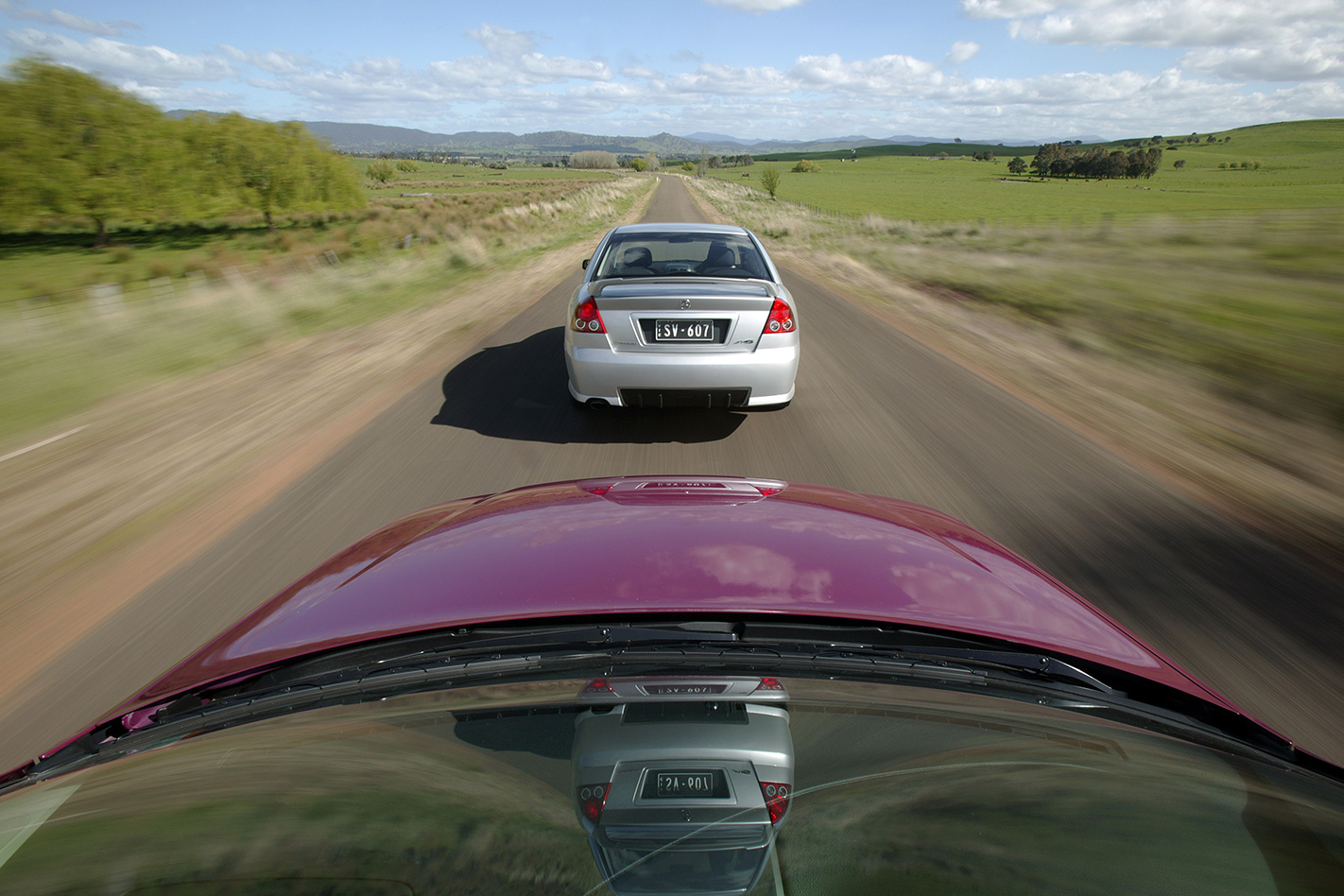
While it gives you points in batches, it only drops back in single point increments, so it remembers your style. There are plenty of other arrows in its quiver, but it’s the speed and slickness of the shifts that’ll win it fans, and make the ask over the four-speeder seem paltry.
But the BF has had plenty of other work done to it (700 new parts in all), stiffening all the exhaust hangers, changing the cans, clogging up the NVH paths and generally making it quieter. It’s a much nicer weapon to throw around corners than the SV6 as well.
A far more agile, adjustable-feeling chassis, the Falcon gives snappier throttle response, both in opening and closing the body. That helps to lend an impression of agility, and it’s extremely responsive mid-corner to either a little dab of the brake pedal or a slight lifting off of the throttle, snapping the nose in hard to the apex.
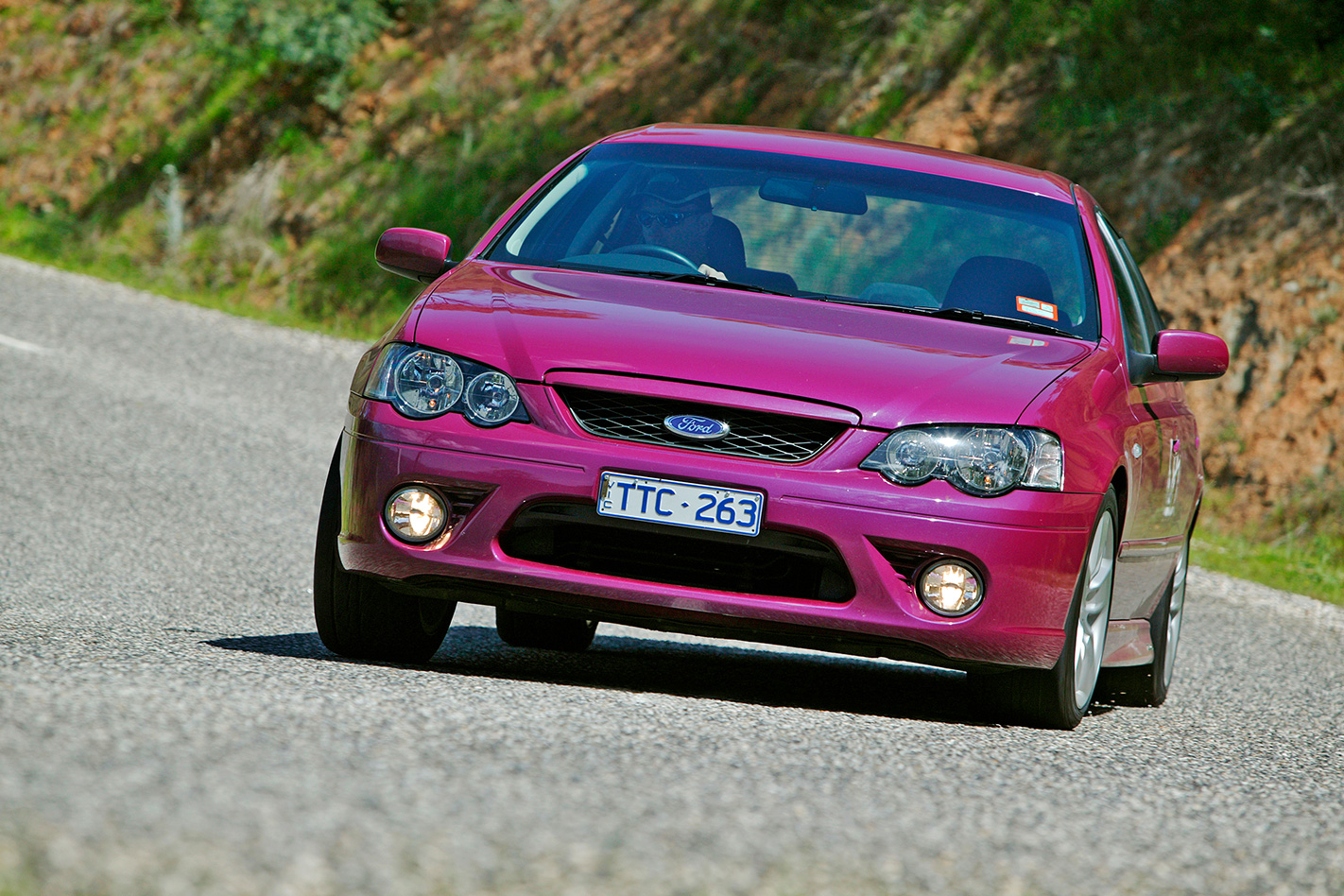
Without the engine to muscle its way around its deficiencies, it is left to clamour at the shoulders of its front tyres to maintain corner speed. The steering wheel feels 30 percent bigger than it needs to be and the rack ratio feels 30 percent slower than it should be.
It offers flatline response and you can’t feel any road undulation or camber change, and it’s extremely slow to tell you when the grip’s run out. It corners quite flat, with far less bodyroll than the Ford, but the V6 lacks mid-range urge to give it punch on anything faster than second-gear corners.
It’s not the chuckable car the V8s are, and sharp corners aren’t its bag, though once you figure out its foibles it can be flowed quite nicely and carry reasonable corner speed. The SV6’s brakes go away sneakily when punting hard and, all of a sudden, the same level of pedal resistance doesn’t equal the same level of retardation.
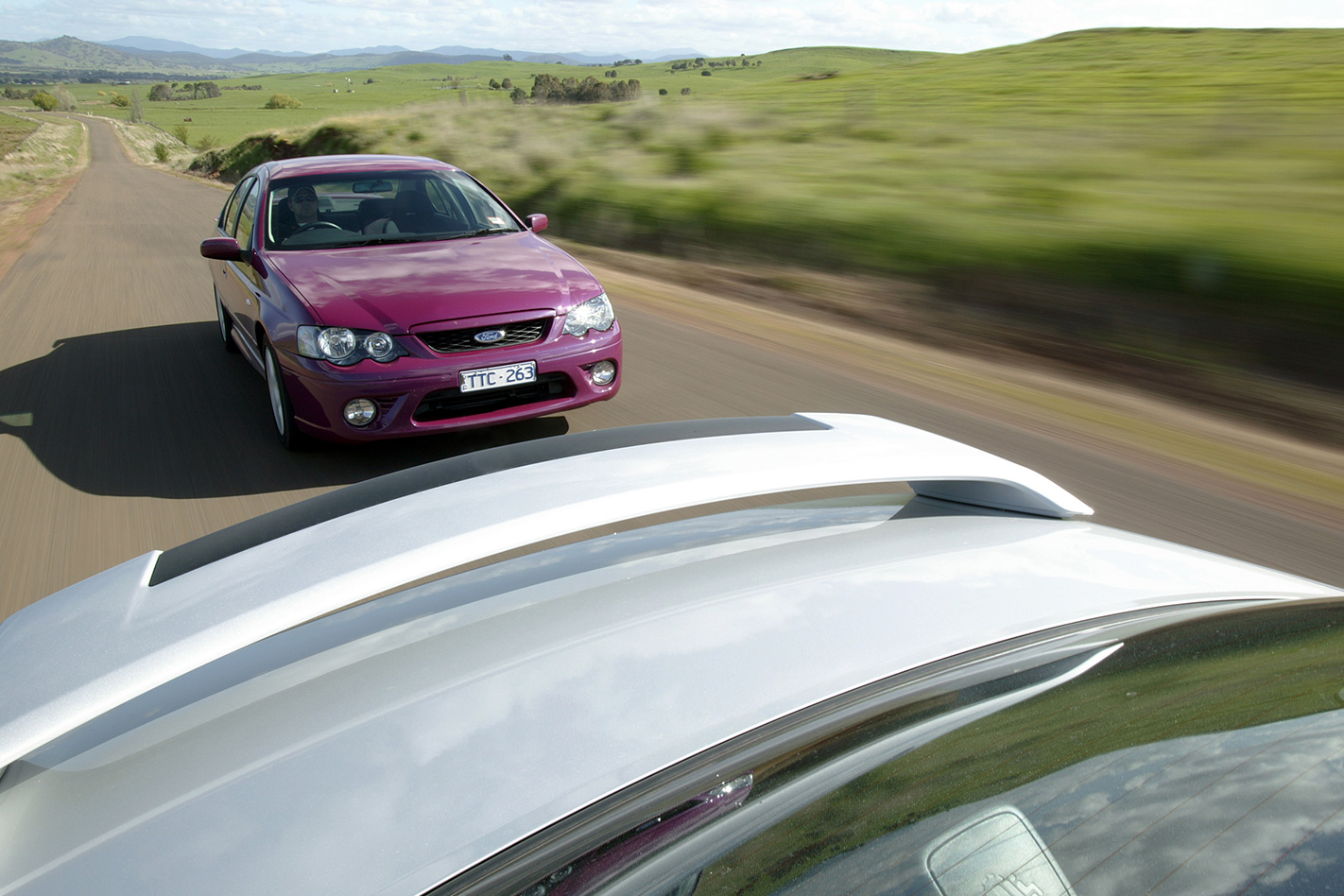
The SV6 has full bolstering, good lumbar adjustment at the right height and are comfortable over a long haul. There’s not much wrong with the Falcon’s chairs, though. The Holden’s just feel exceptional.
The XR6 used a litre per 100km more than the Holden (in spite of running at just 1550rpm in sixth at 100km/h), but then it was driven harder for longer – just because it’s far more inviting. The SV6 is not a bad car at all; it’s just a car that is quite clearly outclassed and outpointed by a Falcon which is on top of its game.
If Holden wants the HFV6 to be a breakthrough engine, then it needs to sit down and nut out why it is so ordinary for its specification before the rot has set in too far. In the meantime, the best Australian naturally-aspirated six-cylinder sports sedan is the Falcon XR6.
Tech Talk
There have been lots of small but very significant lifts with BF. With its dual independent VCT, it can idle at just 550rpm. That’s because the overlap has gone from 25 degrees to seven degrees, which saves fuel and adds refinement. It’s smoother.
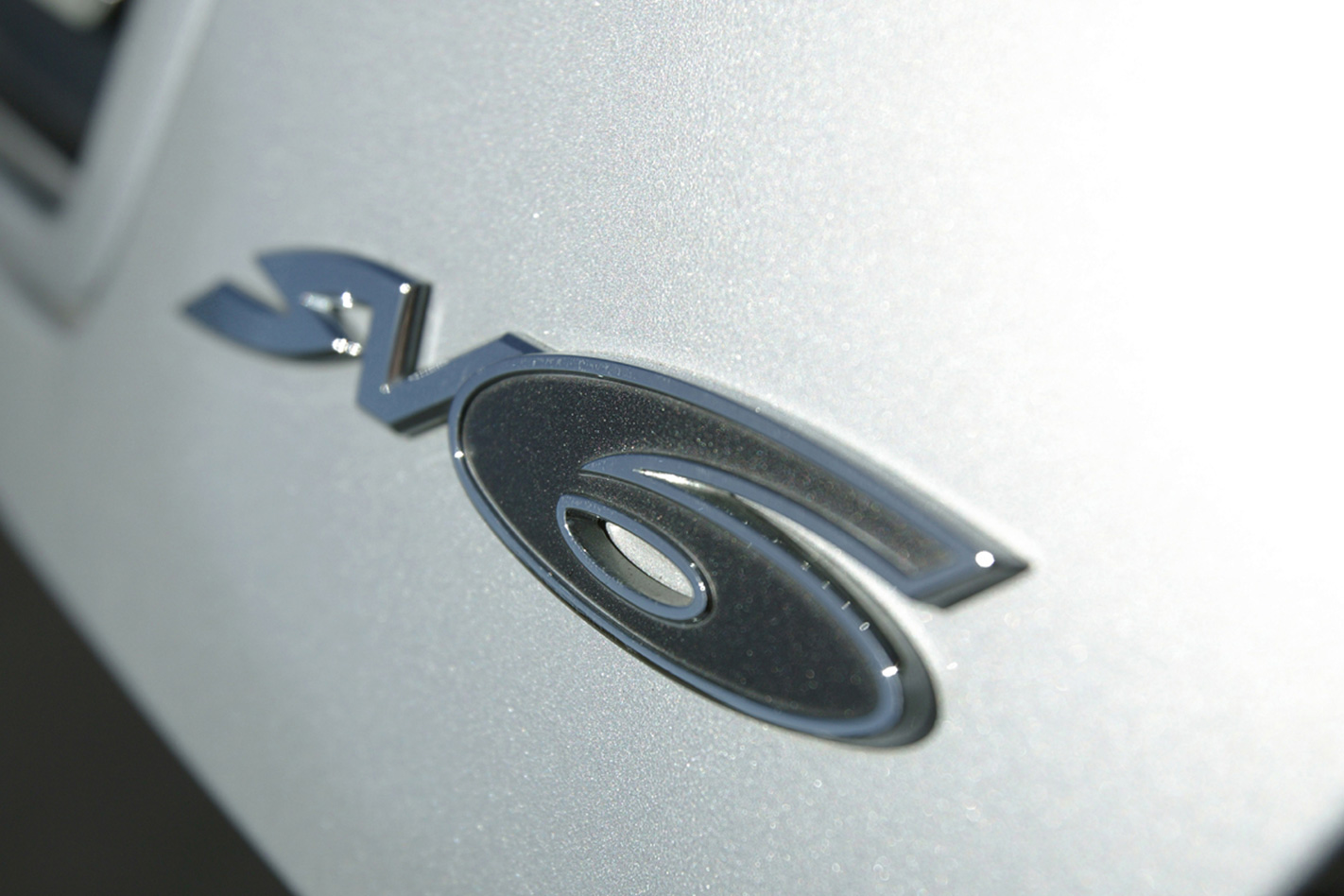
At the time of development GM’s base engine design system engineer, Bob Jacques said: “If there’s a good V6 out there, we found out how and why it was good”. Hmmm, sorry fellas but there’s now an even better engine out there.
Geek Guff
While Spanish Oak has double the memory and 40 percent more processing power than the old version, that’s only kind of the point. Ford reckons the goal of its calibrators is to make the PCM process calculations slower, because the faster it is the more electro-magnetic interference the whole system gets.
Spanish Oak is quicker because it farms out 50 percent of its thinking to peripheral brains, which is enough to assess more than 4000 parameters in calculations each second.
Tell ’em this at the pub
1. Ford runs its brake light wiring through the inside of the lid – Holden runs it down along the outside. 2. Ford hinges are also neater and take up less room (Holden’s just look old and daggy with a square steel tube). 3. The Ford’s boot isn’t deep and the floor shape is ordinary to say the least. 4. Colour of the Falcon (Menace) is actually metallic. You can’t tell most of the time unless it’s in the sun! 5. The XR6 Turbo engine (fingers crossed) may find its way into the Fairmont on BFII.
| u00a0 | Ford Falcon XR6 Specs: | Holden Commodore SV6: |
| BODY | four-door sedan | four-door sedan |
| ENGINE | front-mounted 4.0-litre, DOHC 24-valve inline six | front-mounted 3.6-litre, DOHC 24-valve V6 |
| POWER | 190kW @ 5250rpm | 190kW @ 6500rpm |
| TORQUE | 383Nm @ 2500rpm | 340Nm @ 3200rpm |
| WEIGHT | 1694kg | 1592kg |
| TRANSMISSION | six-speed auto | five-speed auto |
| PRICE | $40,960 | $38,990 |





